FTA (изд-во). Flexography: Principles And Practices. Vol.1-6
Подождите немного. Документ загружается.

subject to continuous high operating speeds
and elevated temperatures. Most motor bear-
ings have the capacity to absorb moderate-
to-heavy thrust loads. It is important that the
manufacturer’s recommendations for servic-
ing this equipment are followed, and no
attempt to substitute, in case of bearing fail-
ure, should be permitted. Replacement parts
should always be identical or equivalent.
Needle Bearings
Plate-cylinder journals are commonly sup-
ported by needle bearings. A needle bearing
is a full-complement roller bearing that has
rollers with a small diameter-to-length ratio,
and uses controlled circumferential clear-
ance rollers. In this application, it is neces-
sary that the plate cylinder journals be hard-
ened, bearing-quality material, since the
journals become the bearing inner race. In
most cases, the hardened bearing journals
are a permanent and integral part of the
plate cylinders.
Needle bearings have three distinct
advantages:
• They have high capacity ratings –
greater than those of a single row ball
or roller bearings of comparable out-
side diameter.
• They permit use of a larger shaft in a
given application.
• They provide anti-friction characteris-
tics in a small cross-section.
Bearing Care and Use
All bearings, plain or roller element,
must be treated and handled as precision
components, which they are. Bearings are
produced with care and must be handled
with care. The operational life of a bearing
is governed by many external factors and
influences, which include bearing installa-
tion, maintenance and lubrication. Ball and
roller bearings are especially susceptible to
damage during installation. Proper bearing
installation is the most critical factor in a
successful bearing application. Bearings
must be kept clean; dirt means damage.
PRESSES AND PRESS EQUIPMENT 143

PRESSES AND PRESS EQUIPMENT 144
Press Maintenance
T
his chapter, as well as other
chapters of this book, covers
the subject of tolerances and
defines the extremely close
accuracy required in all phases
of the flexographic process in
order to produce top-quality printing at opti-
mum press speeds.
REALITIES OF WEAR ON
PERFORMANCE
The tolerance requirements spelled out for
the flexographic press and its various compo-
nents relate to a new press as it is delivered
by the press builder to the converter’s plant. A
flexographic press is a machine with many
moving parts and even the finest mechanical
assemblies and materials are subject to con-
tinual wear. Continual and uninterrupted
counter-measures are necessary, not only to
maintain the original accuracies but also to
forestall major press breakdowns, which are
almost always due to lack of day-to-day care.
The most effective countermeasures con-
sist of a program of organized and preven-
tive maintenance, an example of which is
defined and outlined in the following para-
graphs. First, consider not only the advan-
tages but also the absolute necessity of a
well-organized and conscientiously followed
maintenance program.
BREAKDOWN MAINTENANCE
Many companies still depend upon a sys-
tem of breakdown maintenance to keep their
equipment running. The press is run day-in
and day-out with the bare minimum of rou-
tine maintenance until an actual breakdown
occurs. The reasoning behind that is, with
the cooperation of the press supplier, emer-
gency repairs that now become necessary
can be made with little loss of production.
The reasons generally advanced for this
type of maintenance, or lack of it, are that
personnel are not available to carry out a
thorough preventative maintenance pro-
gram, or that it is the cheapest way to keep a
press running, or both. However, even a cur-
sory analysis will show the more obvious fal-
lacies of this reasoning.
Since press breakdowns hardly ever occur
while the press is standing idle or at some
other convenient time, every minor or major
breakdown results in unscheduled press
downtime. The cost for press time alone may
run as high as $400 or more per hour, which
does not include the actual cost of produc-
tion losses, as well as the intangibles, such as
the loss of customer good will due to late
deliveries, the need to reschedule subse-
quent runs and all the additional irritations
that are always part of a press breakdown. It
becomes quite apparent, even at this point,
that the scale measuring the cost of prevent-
ing breakdowns rather than curing them is
quickly being tipped in favor of prevention.
There is a further effect of this breakdown
maintenance system that is not as readily
apparent, nor as simple to evaluate cost-wise.
Over the years, however, its corrosive effect
will be many times more costly than even a
series of breakdowns. All mechanical parts
are subject to wear, no matter how small they
may be, over any given period of time. Normal
wear is tremendously accelerated by improp-
er or haphazardly performed maintenance.

PRESSES AND PRESS EQUIPMENT 145
This wear may not be noticeable from day to
day or even from month to month. Never-
theless, under these conditions the original
tolerances of many press components are
gradually but consistently being degraded
with a simultaneous and proportional loss of
press efficiency and print quality. These
effects may not become fully apparent until a
long-range comparison of production quality
control charts reveals the sobering fact that
on any particular print job, the quality has
veered away from the desired standard until
the standards cannot be met unless the press
is operated at reduced speeds or by other less
profitable operating means.
Since breakdown maintenance consists of
a series of emergency and stopgap measures
that must be handled when they occur, and
not during convenient off hours, it becomes
apparent that this method is entirely inade-
quate to keep a press consistently running at
optimum speeds. Also, from a cost perspec-
tive, this approach is not in proportion to the
temporary results it achieves.
PREVENTIVE MAINTENANCE
An organized maintenance program is well
planned, supervised, and conscientiously and
consistently carried out. This type of program
will provide not only for complete day-to-day
routine maintenance, but will anticipate and
eliminate a majority of the causes of press
breakdowns through periodic inspection and
necessary correction of all press components.
Only by organizing all facets of maintenance
and incorporating them into production
scheduling is it possible to achieve the ulti-
mate goal of every printing plant: to keep the
press running at its highest efficiency, at an
accurately predictable hourly cost, without
unscheduled stoppages due to breakdowns.
Management Responsibility
Organizing press maintenance is a man-
agement responsibility. Organized preven-
tive maintenance represents a basic oppor-
tunity for increasing plant efficiency by
keeping equipment running at optimum pro-
duction speeds with minimum unscheduled
stoppages. It must, therefore, be rightfully
classified as a major factor in cost control.
Just as management considers cost control
one of its primary functions in all phases of
the business, it must also consider press
maintenance as highly desirable and neces-
sary, and must exercise good management
techniques to implement preventive mainte-
nance programs.
In order for preventive maintenance to
work, management must support its mainte-
nance program with an adequate budget for
personnel and material. Materials should not
only include day-to-day requirements, such as
lubricants and other items of routine mainte-
nance, but also a spare-parts inventory.
Reasonable amounts of those press parts that
are expected to wear in the normal course of
operation, and those that experience has
shown may be subject to sudden failure, must
be carried in inventory. The cost of such an
inventory of spare parts will be made up
quickly if even one item is available at press-
side immediately when it is needed.
Management must delegate and define
maintenance responsibilities, clearly and
unquestionably. A sufficiently large plant
may warrant the employment of a full-time
maintenance engineer who will be entrusted
with planning a detailed maintenance pro-
gram, delegating specific duties under the
program to available personnel, and hiring
additional personnel if necessary. The main-
tenance engineer must also keep a constant
watch to ensure that the maintenance pro-
gram, as defined and initiated, is being car-
ried out. The engineer must implement and
change the program as the machinery and
product mix changes with plant growth.
In a smaller plant, the production or plant
manager may be assigned the responsibility
of planning and executing the maintenance
146 FLEXOGRAPHY: PRINCIPLES & PRACTICES
program. However, whether the plant is large
or small, the important fact is that manage-
ment must recognize the need for planned
preventive maintenance and initiate an ap-
propriate maintenance program with direct
line responsibility given to the proper individ-
uals to carry out the program effectively.
Communicating
Maintenance Needs
Equally important to the establishment of
an effective preventive maintenance pro-
gram, is a proper means of communication
between management, maintenance person-
nel and the press operators. Press operators
are the most important people in any main-
tenance program, as they alone have day-to-
day contact with the machinery and are the
first to detect any abnormal press condi-
tions. The press operators must have a per-
son with whom they can communicate sim-
ply and directly as to any condition that they
feel may hinder press performance. They
must also have the assurance that the report-
ing of these conditions will bring about
prompt and decisive action.
A printing press is in its best condition the
day it is installed on the press manufacturer’s
floor and tested. From that day on, all further
operation of the press tends to deteriorate
the equipment. Therefore, to keep the equip-
ment running as specified by the manufac-
turer, it is necessary to install the machinery
correctly and maintain it properly.
AREAS OF PROPER MAINTENANCE
If proper press maintenance were easy,
there would be little need for discussion of
the topic. Unfortunately, maintenance is not
a simple task. There are quite a few prac-
tices that should be carried out on a regular
basis, and in the correct fashion.
Installation
A good maintenance program begins with
installation of the machinery. Poor installa-
tion of the press in a converter’s plant can
seldom be overcome by even the finest
maintenance program. The press should be
installed on a solid, level foundation of suf-
ficient strength to carry the weight of the
press and accessory equipment, as specified
by the press manufacturer.
The press must be installed and assembled
perfectly level. Modern high-speed roll print-
ing equipment should only be installed under
the supervision of a factory-trained techni-
cian. Smaller press equipment should at
least be checked out by the press builder’s
technician before it is placed in operation.
Utilities
Flexographic printing presses require
some or all of the following utilities at press-
side: electric power, gas, cooled or refrigerat-
ed water, an air supply and exhaust ducts,
and compressed-air lines. The lines and
sources of power and other services must
have sufficient capacity as specified by the
press manufacturer. Electrical and gas equip-
ment must comply with local safety ordi-
nances and the underwriter’s requirements.
Most press suppliers will furnish a detailed
floor plan of their equipment showing where
the sources of supply must be located. It is
best to have these items taken care of in
advance of the actual press installation in
order to reduce installation time. A pre-
installation survey and program will ensure
that the installation is “clean” and not a series
of uncoordinated supply sources, which may
impede the efficiency of the press during
operation.
Lubrication
Lubrication is an essential element of
maintenance if maximum performance and
life is to be realized from any bearing. In a
correctly operating bearing, a thin film of
lubricant separates the rotating member
from the stationary member. This film should
PRESSES AND PRESS EQUIPMENT 147
be of sufficient thickness to prevent contact
of the metal surfaces. Contact of the metal
surfaces will result in overheating, wear,
scoring and possible seizure. Providing the
wear-preventive film is a primary function of
the lubricant. Lubricants also provide:
• protection from corrosion;
• dissipation of heat;
• exclusion of contaminates; and
• the flushing away of wear products.
Lubricants are generally recommended by
the bearing manufacturer. These recommen-
dations should be strictly followed for peak
performance and maximum bearing life.
Lubricants are classified as:
• greases;
• oils;
• sythentic lubricants; or
• dry lubricants.
Greases. Grease is a combination of petrole-
um oil and a suitable thickener. Thickeners
can range from 3% to 30% of the composition,
or more. Grease is critical to bearing perfor-
mance. It must be properly selected to fit the
application requirements; it must be utilized
in a properly developed maintenance pro-
gram to accomplish the expected perfor-
mance of any particular mechanical system.
Oils. This fluid lubricant is generally more
versatile than grease and suitable for severe
applications involving extreme speeds and
elevated temperatures.
Synthetic Lubricants. Synthetic lubricants
usually permit a broader operating tempera-
ture range and provide good lubrication at
high or low temperatures, beyond the limits
of petroleum lubricants. Most commercial
applications of synthetic lubricants are asso-
ciated with extreme temperature conditions.
Synthetic lubricants are extremely expen-
sive, with costs ranging from double to over
100 times that of petroleum lubricants.
Dry Lubricants. Dry lubricants have been used
for many years in either powder or colloidal
suspension form. Dry lubricants are com-
monly used in applications involving high
temperatures and extremely slow speeds.
Lubrication: An Overview
The three major factors that determine
suitability of a lubricant for a particular appli-
cation are the rotational speed of the bearing,
the load it must support and the temperature
at which it operates. In most instances, a
standard petroleum lubricant will suffice.
However, under conditions in which any of
the three three factors are extreme in their
requirements, petroleum with special addi-
tives or a synthetic are available.
PM Lubrication. Preventive maintenance pro-
grams are considered by some as “oiling
campaigns.” It is true that proper lubrication
of rotating components is an absolute neces-
sity for proper maintenance, but it is not the
only function of a preventive maintenance
program. However, no discussion of preven-
tive maintenance would be complete with-
out discussing the lubrication procedures
for most presses.
Generally required are three basic types of
lubricants: oil, grease and gear grease. Press
manufacturers furnish a lubricating chart
with their equipment, specifying the type and
grade of lubricants to be used. It is important
that no deviation be made from these specifi-
cations, since the suppliers of lubricants
have done much in the way of specialization
in recent years. Every reliable press builder
works closely with one or more oil compa-
nies to determine the most efficient lubri-
cants for individual press components.
To ensure systematic lubrication, either a
separate lubrication chart or one that is
included in the general maintenance check-
list should be used. A simple method to
ensure correct lubrication is to color code
the various lubrication points in accordance
with the type of lubricant that is to be used.
For instance, color code red for oil, blue for
grease, etc.
148 FLEXOGRAPHY: PRINCIPLES & PRACTICES
Anti-friction or Rolling Bearings. In general,
ball or roller bearings must be greased,
never oiled, since oil will not cling to the
balls or rollers and give adequate lubrica-
tion. However, some ball bearings on guide
rolls are specifically designed to run with a
fine silicone-type oil lubricant. In this case,
the bearing retainer seals will have been
removed to allow the oil access to the bear-
ing. It is especially important that this type
of bearing be oiled with the proper lubricant
on a regular basis to ensure that it is not con-
taminated with dirt or grease, which will
impair its efficiency and life.
Other bearings should be greased at least
once a week. Special attention should be paid
to any bearings in the vicinity of the ink foun-
tains, not only to ensure that they are proper-
ly lubricated and full of grease, but also to
ensure that they have not become contami-
nated with spilled ink, dust or dirt. Keeping a
supply of spare bearings for anilox and rub-
ber fountain roll shafts is a good practice.
Sleeve Bushings. Bushings require daily care
and should always be oiled with the grade of
oil specified. They should not be greased,
since grease is not free-flowing enough to
properly distribute itself in the bushings or
sliding bearing. Bushings should be oiled at
the beginning of each work shift and again
after approximately four hours of running
time. If the bushings are automatically lubri-
cated by pre-regulated oiling, care should be
taken to ensure that the master oiling system
is functioning and that it has a sufficient sup-
ply of oil to operate during the pressrun.
It is a good practice to keep at least one set
of spare plate-cylinder bushings or bearings
on hand. These bushings should be replaced
as soon as they show any sign of excessive
wear or play.
One-shot Oilers. Many presses have been
equipped with one-shot oiling systems.
These systems will lubricate all, or a major
part, of the bushings and sliding bearings on
the press by manual or automatic operation
of one or more of the oil pumps on the press.
A one-shot oiling system greatly simplifies
proper periodic lubrication, but it is not an
automatic guarantee that all lubricating
points attached to this system will actually
be oiled. In other words, all lubricating
points incorporated in the one-shot oiling
system should be periodically inspected to
be sure that they are actually receiving oil
and that the system has not become clogged
or inoperative in some sections.
Because of the problems inherent in one-
shot oiling systems and the fact that they
tend to over-oil some areas of the press,
there has been a trend back to the manual
oiling system. Here again, it is necessary that
a proper periodic maintenance program be
set up so that each point on the press that
must be oiled is carefully inspected and
oiled at periodic intervals.
Open Gears. Open gears are usually lubricated
with gear grease applied either from a brush
or paddle and should be greased at least once
every four weeks. Special attention should be
paid to the gears on or in the vicinity of the
printing stations. These gears have a tenden-
cy to collect ink between the teeth, which
may not only cause premature wear or break-
age, but will, in the interim, prevent them
from running on their true pitch line.
Closed Gear Boxes. Beveled or spiral gears
should be properly enclosed in gear boxes,
as the centrifugal forces on these gears are
such that they will quickly rid themselves of
even heavy gear lubricants. All gearboxes
need only be kept filled to the prescribed
level with the specified oil or grease to
ensure continuous lubrication. Oil level on
these gear boxes should be checked on a
daily basis and generally should be drained
completely every three to four months and
refilled with fresh oil or grease.
Brakes and Clutches
In addition to normal oiling and greasing
maintenance, inspection of other compo-

nents on the press is required. On presses
equipped with manual or automatic flying-
splice unwinds, prescribed maintenance
must be taken on the unwind brakes,
whether they be of the simple hand-
adjustable friction type or a more sophisti-
cated electric, pneumatic or electric-particle
brake type. The press manufacturer should
supply manuals for the unwind brakes that
are furnished with the equipment.
In the case of manual or felt friction disc-
type clutches or brakes, it is necessary to
check with the press manufacturer for the
proper procedures to employ.
Hydraulic Cylinders and Lines
Most flexographic presses are equipped
with a hydraulic system that controls plate
cylinder throw-off, variable-speed fountain
drives, nip-roll pressure controls and other
equally important operating systems. Hy-
draulic units are comparatively maintenance
free. However, it is important that the manu-
facturer’s instructions be followed closely
on the initial start-up. The oil tank must be
filled with a proper grade of clean hydraulic
oil, and the system must be properly “bled”
and checked before starting.
If a loss of hydraulic pressure occurs, it is
usually due to leakage in one of the hydrau-
lic oil fittings, the location of which can be
readily spotted. Continual visual inspection
of the hydraulic lines is necessary. Should
leakage develop, new fittings and/or seals
should be installed immediately.
Anilox and Fountain Rolls
Inspection of engraved anilox ink transfer
rolls, as well as the rubber-covered fountain
rolls, can best be delegated to press-operat-
ing personnel, since it can be combined with
the wash-up of these rollers during press
makeready. Press personnel should be in-
structed to promptly report every nick, pit-
ting or peeling of chrome on the anilox roll.
It is possible to repair minor damage at a
comparatively small cost if caught at an
early stage, since these defects on the anilox
roll can cause damage to the rubber fountain
roll and the printing plates. Small imperfec-
tions in the anilox roll will cause spots to be
worn on the rubber roll, appreciably short-
ening its life. Similarly, slight nicks or other
damages to the rubber-covered fountain roll,
if detected promptly, can often be repaired
by regrinding the roll at considerably less
expense than required if the roll is used until
complete recovering becomes necessary.
It is important that the rubber-covered
fountain roll be separated from the engraved
anilox transfer roll whenever the press is
shut down between shifts or for any other
prolonged stoppages. If these rolls are left
squeezed together when not rotating for an
extended period of time, a “flat” will invari-
ably develop on the rubber fountain roll sur-
face. This distortion can only be removed by
regrinding, or in severe cases, by recovering
the roll. Special attention must also be paid
to a thorough and deep cleaning of the
anilox roll at the end of each work day.
Adequate cleaning ensures that ink or sol-
vent residue does not remain in the cells,
where it could attack the chrome plating or
cause cell plugging.
Electric Systems
Electric motors require periodic lubrica-
tion in accordance with each manufacturer’s
instructions, except for those motors that
are equipped with lifetime or sealed bear-
ings. Besides the main drive motor and
numerous auxiliary motors, the electrical
installation on modern high-speed presses
includes relays, switches, eddy-current
clutches, commutator rings and either solid-
state drive control systems or rotating field
AC-to-DC converters.
At the time of press purchase, the press
manufacturer should work with the electric
motor suppliers and drive-component sup-
pliers to prepare a proper preventive main-
PRESSES AND PRESS EQUIPMENT 149

150 FLEXOGRAPHY: PRINCIPLES & PRACTICES
tenance list of spare equipment to be sup-
plied with the press. Drive-system manufac-
turers should supply a preventive mainte-
nance checklist for their equipment and a
listing of the nearest regional office for tech-
nical service should such assistance be nec-
essary. Most modern drive systems have
been designed so that replacement parts
may be easily plugged into the circuit, as it is
recognized that the cost of an electrical engi-
neer’s time to define problem areas and cor-
rect them in the field is expensive.
Dryer
The drying system on most flexographic
printing presses consists of heat-supply units
with electric motor-driven fans for supply
and exhaust air. The drying system should
meet local safety codes, and the press manu-
facturer should supply a clearly defined
schematic for the system. It is especially
important that periodic checks be made of
the drives between the electric motors and
the fans, as well as the motors and compo-
nents in the gas-fired system.
It is also advisable to make sure everything
is properly lubricated. Here again, the press
manufacturer should supply a list of compo-
nents that should be checked routinely to
ensure that the press will not be down for
excessive time due to component failure.
Also, the names and locations of the nearest
service representatives for component parts
of the drying system should be included with
the press maintenance material.
If the dryers are equipped with air filter
banks, they should be inspected often to
ensure that the drying system will operate
properly and that the solvent-laden fumes
are carried out of the pressroom.
Auxiliary Equipment
There are many types of auxiliary equip-
ment supplied both on and separate from a
printing press. This equipment includes web
guides, web scanners, ink pumps, viscosity
controls, impression counters, slitting
attachments, web treatment and other items.
The press manufacturer should supply basic
catalogs that will advise the proper mainte-
nance procedure for each press component.
Proper spare-parts lists should be prepared
on each of these major components, since
they are just as subject to wear and failure as
the printing press itself, and their failure can
interrupt the complete system.
Spare Parts Inventory
The spare parts inventory should receive
careful attention by the converter and the
press manufacturer. If a systematic approach
is taken prior to the press installation, it is
possible to have on hand at the time of start-
up a group of spare parts that can generally
cover 95% of all possible breakdown situa-
tions. The investment in these parts will nor-
mally be such a small fraction of the total
cost of the press, its attendant equipment and
installation, that it should be an integral part
of the initial press purchase. Having the
equipment initially on hand, as well as a good
control system to replace those items that
are used, will, over the years, pay for these
parts many times over.
PRESSMANSHIP AND
EQUIPMENT CARE
In any preventive maintenance program,
the responsibilities of the press operating per-
sonnel are of paramount importance. The
people who live with the equipment are the
first line of defense. Many tasks that come
under the heading of maintenance can be
best carried out on a day-to-day basis by
press-operating personnel. First and foremost
is keeping and maintaining a clean press.
Timely Clean-up
It is not easy to keep a flexographic press
spotless, especially if there is not time set
aside each week for a thorough press clean-
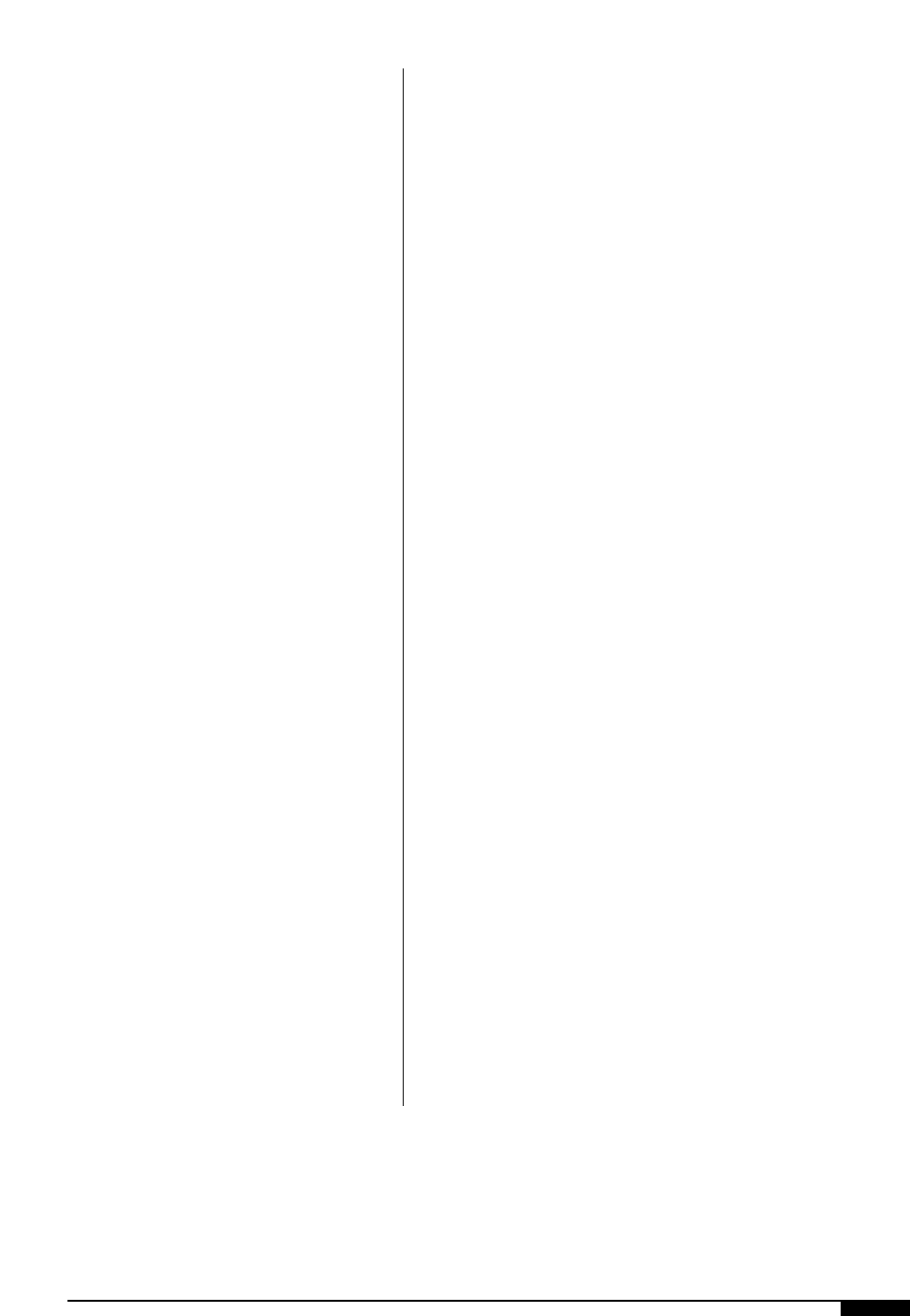
ing. It is, however, easier to wipe away spilled
ink when it is fresh than when it becomes
hardened or accumulated to the point where
removal is a major job. It is easier to empty
drip pans when they are half full than wait
until they are overflowing or filled to the top
when they cannot possibly be removed with-
out spilling. It is easier to wipe small amounts
of excess oil off a press than to wait until an
entire press frame as well as the floor around
the press, becomes covered with an oil film.
Any available time when the press is not run-
ning, or during wash-up, can be profitably
used to take care of such minor cleaning jobs.
Cleaning such routine items will remain minor
as long as it is done on a routine basis.
Not only must the printing press be kept
clean, but the area around the press also must
be kept neat and orderly for an efficient oper-
ation. Floors should be kept clean and proper
containers supplied to hold such items as
rags and waste paper. No unnecessary ink
pails or loose tools should be scattered about
the press area. An orderly work area not only
enables personnel to be more efficient and
craftsman-like, but also eliminates many of
the hazards that might otherwise endanger
the safety of the operating personnel.
The press operator should not create
unnecessary maintenance problems by oper-
ating the equipment improperly, such as by
standing on cross-adjustment shafts and
other items that are not normally designed to
carry an operator’s weight. The maintenance
department should provide proper plat-
forms, ladders and/or steps to allow proper
access to the press. These access areas cre-
ate a neater area and a safer workplace.
Handling Care
Careful handling of parts that are continual-
ly mounted into or removed from the press
during normal operating procedures is a
necessity. Plate cylinders, ink pans and covers
are precision items and require and deserve
care. Plate cylinders that are manufactured
with very close tolerances and that are quite
expensive can perform properly only if their
original tolerances are maintained. Rough
handling of these items can reduce their effec-
tiveness. Pans or covers that become dented
should be repaired immediately, since they
will be harder to clean up and may not fit neat-
ly with the color stations, reducing their effec-
tiveness and requiring longer setup times.
The Press Operator’s Opportunity
At the end of any operating shift or during
makeready, be sure that all fountain rolls are
backed off and properly cleaned. When plac-
ing the press back into adjustment, make
sure that all the components are functioning
and that force is not required to make the
press settings. The parts of the adjustment
system are designed and precision-made to
close tolerances and should operate freely
and smoothly. If they do not operate in this
fashion, then a careful inspection of the
color stations must be made to determine
what is causing the problem so that it may
be properly repaired.
The press operator is the first person to
see signs of the press performance deterior-
ating. The operator’s judgment alone will
often lead to preventive maintenance
beyond the scheduled maintenance on sec-
tions or parts of the press that are just begin-
ning to fail. Press operators who are “tuned
in” to the press not only keep the press oper-
ating at higher efficiency, but make the
pressroom a more pleasant place to work
and a safer operation.
PRESSES AND PRESS EQUIPMENT 151

PRESSES AND PRESS EQUIPMENT 153
Appendix A – Diametric Pitches
20 2.500 7.854
21 2.625 8.247
22 2.750 8.639
23 2.875 9.032
24 3.000 9.425
25 3.125 9.817
26 3.250 10.210
27 3.375 10.603
28 3.500 10.996
29 3.625 11.388
30 3.750 11.781
31 3.875 12.174
32 4.000 12.566
33 4.125 12.959
34 4.250 13.352
35 4.375 13.744
36 4.500 14.137
37 4.625 14.530
38 4.750 14.923
39 4.875 15.315
40 5.000 15.708
41 5.125 16.101
42 5.250 16.493
43 5.375 16.886
44 5.500 17.279
45 5.625 17.671
46 5.750 18.064
47 5.875 18.457
48 6.000 18.850
49 6.125 19.242
50 6.250 19.635
51 6.375 20.028
52 6.500 20.420
53 6.625 20.813
54 6.750 21.206
55 6.875 21.598
56 7.000 21.991
57 7.125 22.384
58 7.250 22.777
59 7.375 23.169
60 7.500 23.562
61 7.625 23.955
62 7.750 24.347
63 7.875 24.740
64 8.000 25.133
65 8.125 25.525
66 8.250 25.918
67 8.375 26.311
68 8.500 26.704
69 8.625 27.096
70 8.750 27.489
71 8.875 27.882
72 9.000 28.274
73 9.125 28.667
74 9.250 29.060
75 9.375 29.452
76 9.500 29.845
77 9.625 30.238
78 9.750 30.631
79 9.875 31.023
80 10.000 31.416
81 10.125 31.809
82 10.250 32.201
83 10.375 32.594
84 10.500 32.987
85 10.625 33.379
86 10.750 33.772
87 10.875 34.165
88 11.000 34.558
89 11.125 34.950
90 11.250 35.343
91 11.375 35.736
92 11.500 36.128
93 11.625 36.521
94 11.750 36.914
95 11.875 37.306
96 12.000 37.699
97 12.125 38.092
98 12.250 38.485
99 12.375 38.877
100 12.500 39.270
NO. OF TEETH PRINTING/PITCH
IN GEAR DIAMETER (IN) REPEAT (IN)
NO. OF TEETH PRINTING/PITCH
IN GEAR DIAMETER (IN) REPEAT (IN)
DIAMETRIC PITCH 8
